If you’re an aroid lover like I am, you always look for unique leaf shapes. If you’re tired of the heart-shaped anthuriums (or collected them all!), let me introduce you to Anthurium pedatum. Its dragon-shaped leaves will add a touch of mythical wonder to your indoor jungle.
This blog will cover the basics of caring for and growing anthurium pedatum and some cool facts and observations you won’t find anywhere else!

Anthurium Pedatum & Its Natural Habitat
Anthurium pedatum is a tropical plant in the Araceae family native to the western slopes of Andes in Colombia. It is a terrestrial type of Anthurium that inhabits very wet montane forests. It is found at elevations of 1500-2000m.
Anthurium pedatum is characterized by a highly divided leaf blade. It has short internodes and long petioles (30-75cm). The petioles emerge from a very tight cluster at a base. This gives the plant a certain air of elegance. I was immediately drawn to this Anthurium.
The leaves are bright green, coriaceous and glossy. They turn matte once they harden off. The leaf blade has 9-13 divisions with undulated margins.
The spathe is yellow-green, and the fruit is deep purple.
Interestingly the name pedatum comes from the Latin word ‘pedatus’. It means ‘footed’. It’s an apt name for a plant whose leaves resemble a bird’s foot.
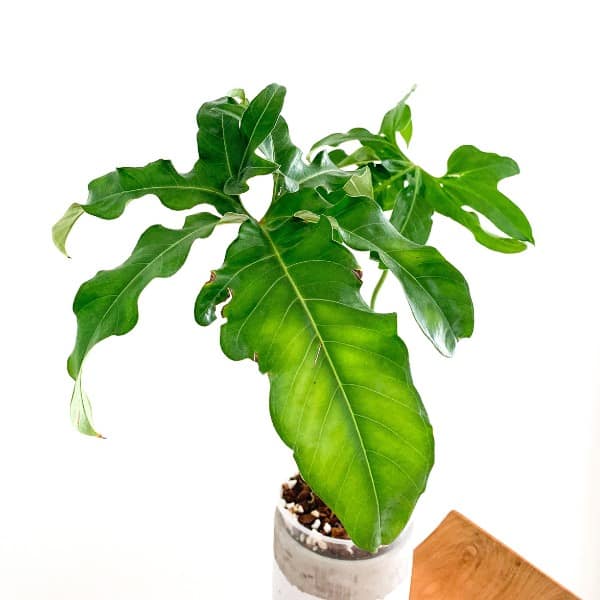
Unusual Pendent Inflorescence
Anthurium pedatum’s inflorescence is very interesting. Anthurium pedatum spathe (a large sheathing bract enclosing the spadix of aroids) is shaped like an inverted canoe with the spadix pendent below.
In this case, the spathe has acquired a function of an umbrella.*
These species are native to very wet middle-elevation forests of the western slopes of the Andes where there is a high probability of rain disturbing the pollen.
Because of its unique shaped spathe, the spadix can remain dry during the rainfall and can be pollinated by insects. You can see what the inflorescence looks like in this photo below.
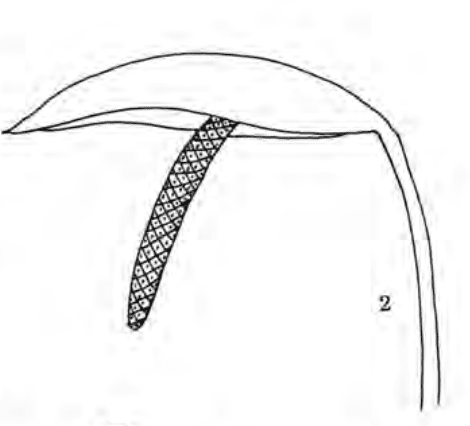
Since we are on the topic of inflorescences, you might also be interested in the pollination and propagation of this unique anthurium. Knowing which section Anthurium pedatum belongs to is key.
Anthurium Pedatum Section
Anthurium pedatum was previously classified as belonging to a very small section of Schizoplacium.
There are only 7 members of this section that include: Anthurium angustisectum, A. expansum, A. longissimum, A. palmatum, A. pedatum, A. pedatoradiatum, A. podophyllum. At some point, it was classified in the section Dactylophyllium.
Botanists and scientists revisit classification of Anthurium sections based on newly collected data. At this point, I am unable to confirm which section it is currently classified as.
Knowing which section an anthurium belongs to is important when it comes to pollinating. Usually, Anthuriums belonging to the same section can be crossed. Sometimes, Anthuriums can be cross-pollinated across different sections.
I’ve had my Anthurium pedatum plant for over 2 years now and it has yet to bloom. I’m quite puzzled by it given my other anthurium plants produce inflorescences quite frequently. I’m speaking of you, Anthurium gracile!
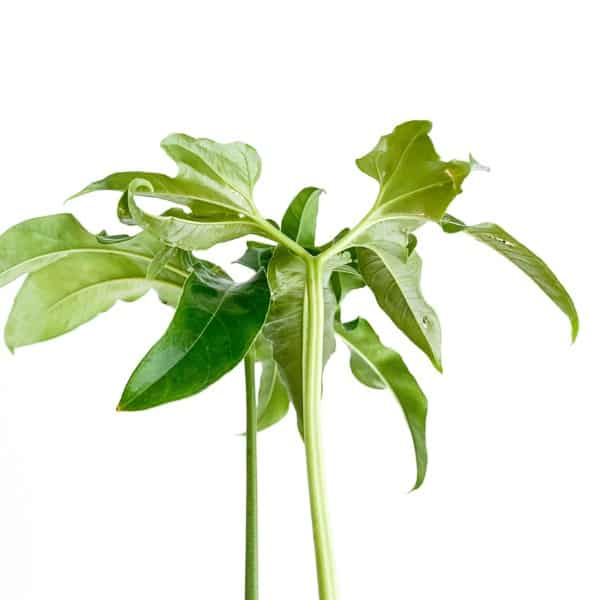
ANTHURIUM PEDATUM CARE TIPS
I’ve had my Anthurium pedatum since the beginning of 2021. It is a steady grower, and fuss free.
POTTING MEDIUM
The prevailing opinion among Anthurium growers says that anthuriums like to be root bound when grown in pots.
And it is a reason why I have not repotted my Anthurium pedatum yet. The roots are thick but brittle, so you need to be very careful when repotting not to break them accidentally.
If you have to repot it, try loosening (also known as teasing or tickling) the roots very gently not to disturb them too much.
My rule is that as long as the plant pushes out healthy leaves, I keep it as is. If it ain’t broke, don’t fix it!
My Anthurium pedatum was an imported plant that arrived potted in coco peat and perlite. I didn’t want to disturb the roots too much, given the plant was already in shock and needed to acclimatize to my growing conditions.
I left it in its original potting medium but added my standard chunky aroid mix.
A mix of orchid bark, perlite, coco coir, coco chips, and worm castings is excellent for growing Anthurium pedatum.
A well-draining potting mix is a must for growing a healthy Anthurium pedatum.
Anthuriums like to have their roots moist but not overly wet. With well-draining soil, you won’t have overwatering issues.
For a soilless aroid mix recipe, visit my anthurium veitchii blog, where I go into more detail on which ingredients to use.
Also, for tips on how to acclimatize an imported plant, visit my anthurium warocqueanum blog, where I give tips on how to adapt the imported plant to your conditions best.
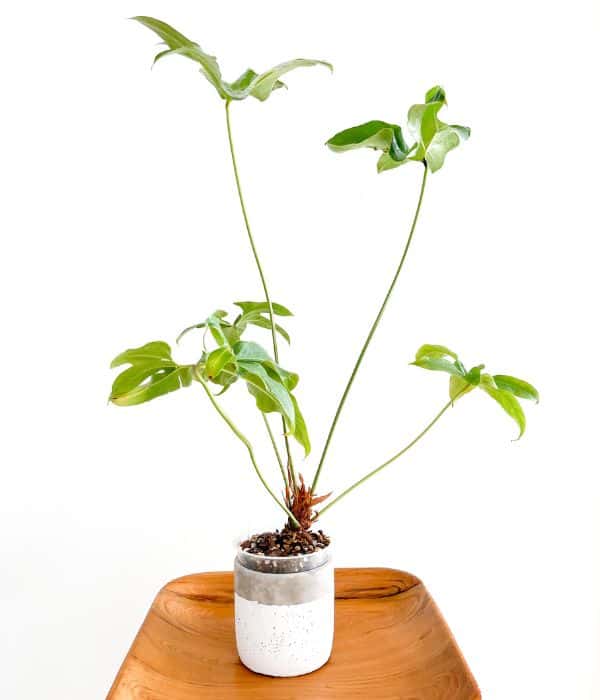
LIGHT REQUIREMENTS
Anthuriums, in general, are considered to have lower light requirements. Based on my observations, it is not entirely true.
When my Anthurium pedatum was growing under a grow light, the petioles reached about 30-50 cm in height. After a while, the plant had outgrown its shelf, and I had to place it next to a window but without the grow light.
The next leaf had a much longer petiole, reaching almost 70cm in height, as if the plant was reaching for more light.
Bright indirect light or grow light is ideal for this anthurium to grow optimally.
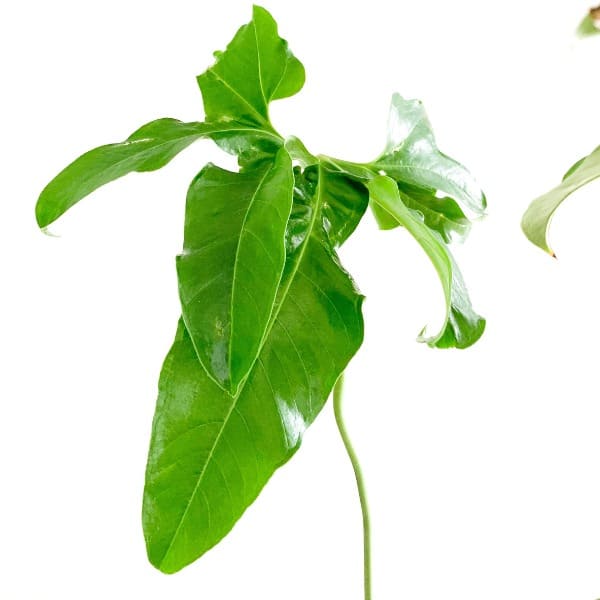
FERTILIZER
A well-balanced slow-release fertilizer is an excellent option to start with.
I supplement it with a weekly liquid fertilizer, fish, or kelp emulsion.
Opt for a scoop of warm castings for an organic nutrient boost when planting your aroid.
HUMIDITY, AIRFLOW & TEMPERATURE
This anthurium is quite hardy and non-fussy. In my setup, it leaves at room temperature and ambient humidity of about 50-55%.
It may lose a leaf or two before it gets acclimated to your conditions, but once that period is over, it will reward you with steady growth.
I haven’t observed it needs any special care regarding humidity, airflow, or temperature.
PESTS & DISEASES
I have yet to see any pest infestation on this Anthurium, even when it was in the neighborhood of spider mites-infested plants. It is one of my most pest-resistant plants.
Up until recently, I have had no issues. But to my astonishment, I noticed something weird happening to its newest leaves.
Some of the new leaves started producing an overgrowth on the abaxial side. It resembles ruffles.
Is it related to nutrient deficiency?
It receives regular fertilizer but it has yet to be repotted since I got it. Only two leaves had it.
They developed black spots, then turned yellow, at which point I cut them off. The following leaves developed normally.
None of my other anthuriums ever developed such an anomaly.
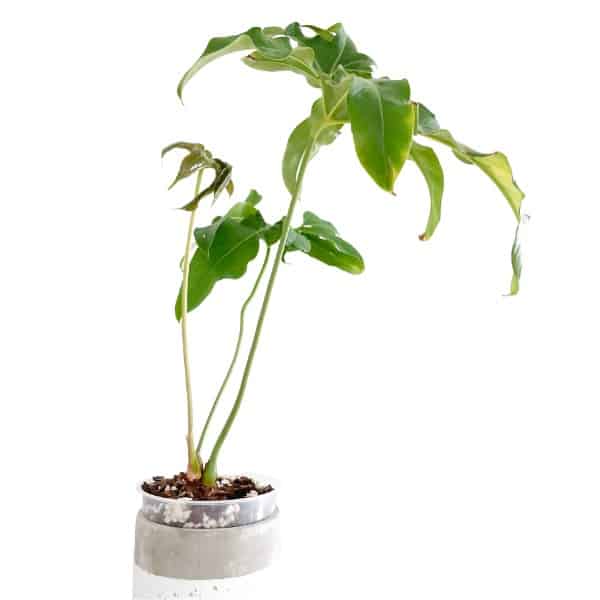
Anthurium Pedatum vs Pedatoradiatum
Often Anthurium pedatum is confused with pedatoradiatum. However, they are two different species of Anthuriums.
While it may be difficult to tell the difference by looking at a juvenile plant, mature specimens look pretty different.
Anthurium pedatum has a distinct posterior lobe, unlike the pedatoradiatum.
Pictures comparing the two species are coming soon!
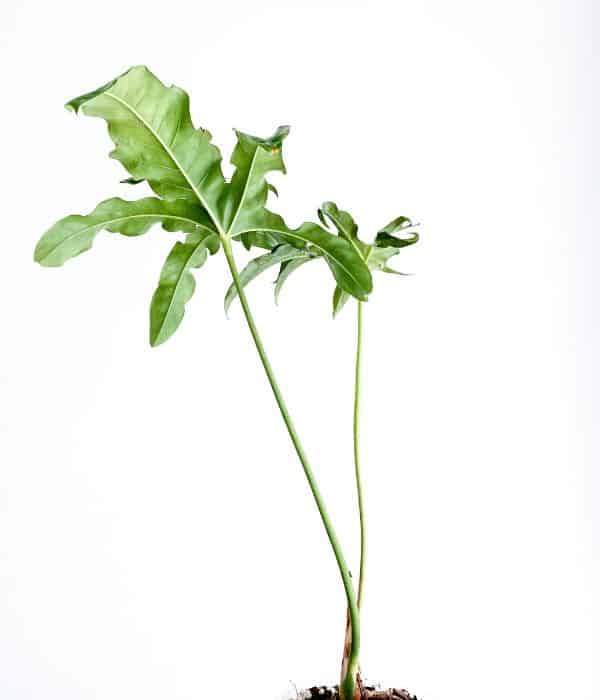
Anthurium pedatum is one of my favorite anthuriums not only because it is easy to grow, but also because it looks absolutely stunning among the other aroids.
I’m on a hunt for other anthuriums with finger-like leaves. Anthurium pedatoradiatum, polydactylum, and polyschistum here I come!
Want more? Check out my other rare anthurium species.
You may also be interested in these blogs:
Anthurium Crystallinum Care: A Complete Guide
9 Rude Looking Plants You Didn’t Know You Needed
Anthurium Microphyllum – An Exotic Brazilian Aroid
Anthurium Villenaorum – Uncovering the Hidden Gem Among Aroids
A Really Quite Good Guide to Black Anthuriums
Anthurium Moronense: A Three-Lobed Aroid to Add to Your Collection

